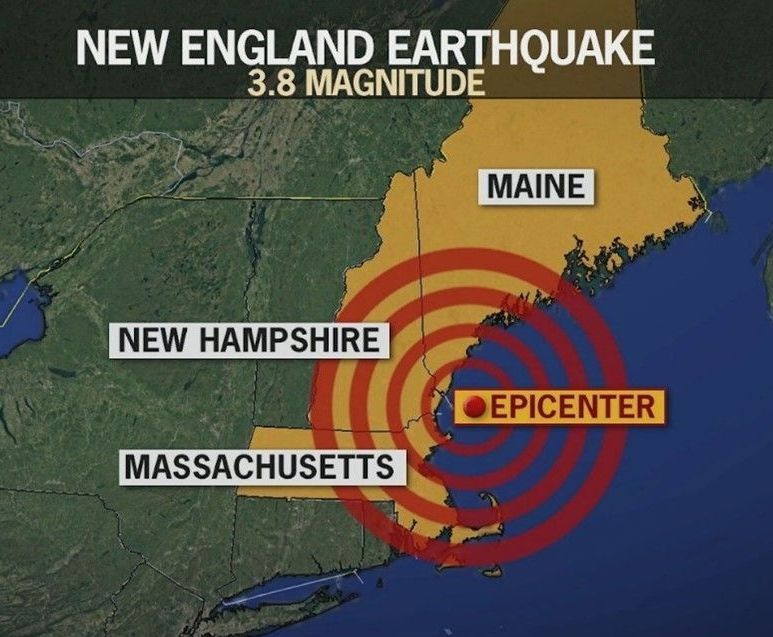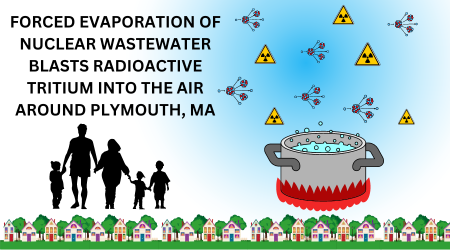EARTHQUAKE RAISES CONCERNS ON SEABROOK’S CONCRETE
- By C-10 Administrator
- •
- 01 Mar, 2018

If you felt the ground shaking the morning of February 15, you weren’t alone. We felt it too at our Newburyport office. And we wondered how the 2.7 magnitude earthquake may have impacted concrete at Seabrook Station that is already stressed by a condition known as Alkali-Silica Reaction or “ASR.”
The quake had an epicenter in East Kingston, New Hampshire, approximately eight miles west of Seabrook, New Hampshire.
The concrete in key structures including the containment dome and spent fuel pool at Seabrook nuclear power plant has been found to have ASR, a progressive and irreversible condition which can cause cracking and weakening of concrete. Seabrook is the first nuclear plant in the nation known to have ASR, and has been under enhanced federal oversight since the problem was first discovered in 2009.
“This concrete is meant to protect the public from exposure to some of the most toxic materials on earth — radioactive byproducts of atomic fission,” said Natalie Hildt Treat, executive director of C-10. “You would think a measurable earthquake would put further stress on that,” she said. “Little cracks can lead to bigger cracks … it’s definitely a safety concern.”
NextEra, Seabrook’s owner, had a different take.
“The earthquake recorded near East Kingston, New Hampshire did not impact Seabrook Station Nuclear Plant nor was there any risk to the public. Nuclear plants, including Seabrook Station, are designed to withstand earthquakes and other natural events. Seabrook Station’s structures are robust, safe and fully capable of performing their design functions. We have demonstrated, and the NRC has confirmed this point repeatedly,” NextEra spokesperson Sarah C. Gebo said in a statement to C-10.
“I was here, and I felt it too. So I responded immediately to the control room,” said U.S. Nuclear Regulatory Resident Inspector Paul Cataldo, in a phone call with Treat the day after the quake.
Cataldo explained that while the seismic monitors at Seabrook didn’t even register the quake, they are designed and calibrated to NRC specifications, so that something like a crane or truck moving outside the plant doesn’t set off alerts.
Still he said that plant managers with NextEra Energy spent an entire day inspecting the plant, and NRC personnel conducted separate inspections. “We walked down all the structure components including those affected by ASR,” said Cataldo.
The NRC issues quarterly inspection reports
, with the next one to be released in April. Also this spring, the NRC is planning their annual public meeting where they present on safety findings at Seabrook Station. Cataldo said they are looking at May 1 or 2. Stay tuned for details.
More Background on ASR at Seabrook
In 2016, NextEra Energy Seabrook LLC submitted a license amendment relative to the ability of its concrete to continue performing as designed. In October 2017, the C-10 Research & Education Foundation was granted standing in a case being considered by the U.S. Nuclear Regulatory Commission.
NextEra’s pending License Amendment Request is relative to the deteriorating concrete
at the plant, which has been operating since 1991. Citing serious safety concerns with the concrete and flaws in the concrete testing and monitoring methodologies, C-10 sought intervenor status in the NRC docket. A public adjudicated hearing is expected in February 2019.
C-10 had alleged in its April 2017 petition to the NRC that the testing was inadequate and not representative of actual conditions at Seabrook, and that if the concrete failed and resulted in a radiological release, its monitoring operations, its members, and the public at large could face grave danger.
For more information, see this C-10 fact sheet on ASR and Seabrook. Also see coverage in the Boston Herald and Newburyport Daily News .
Follow us



